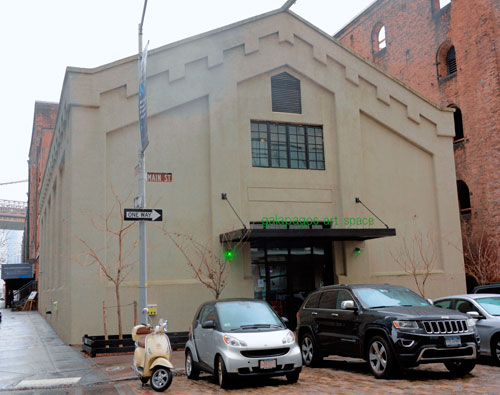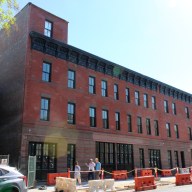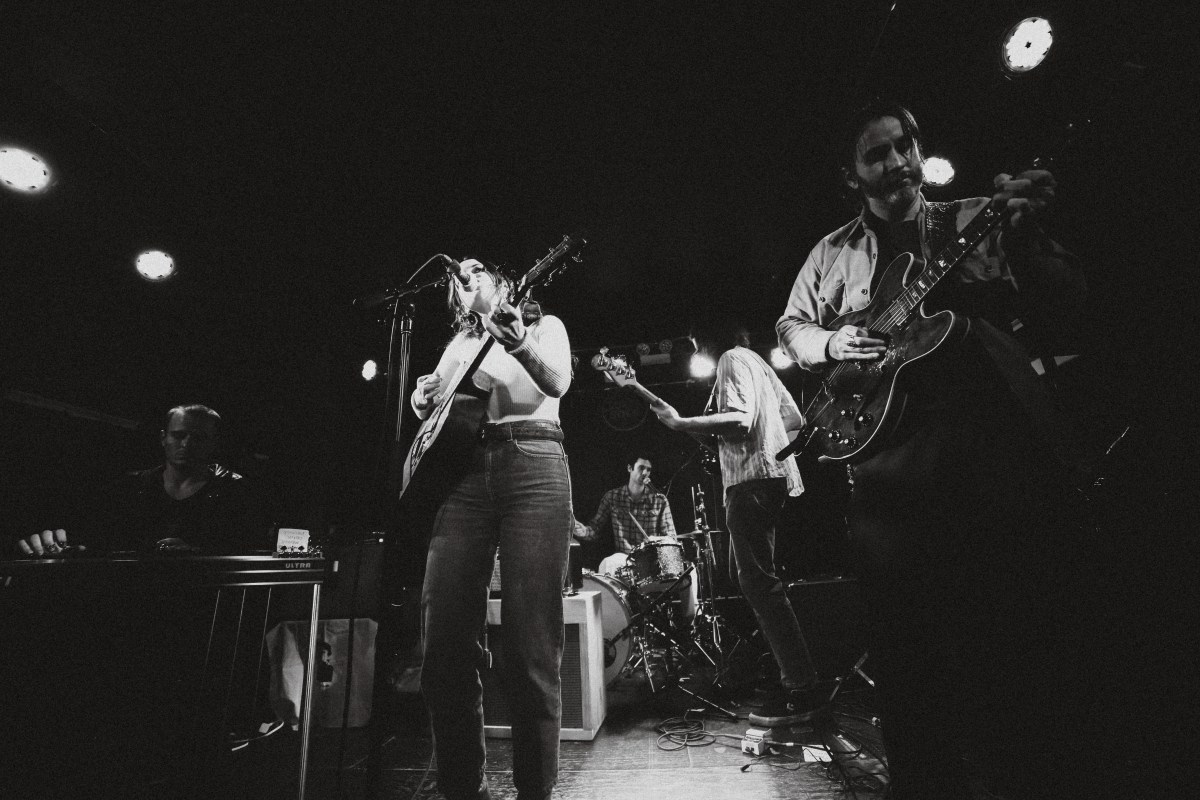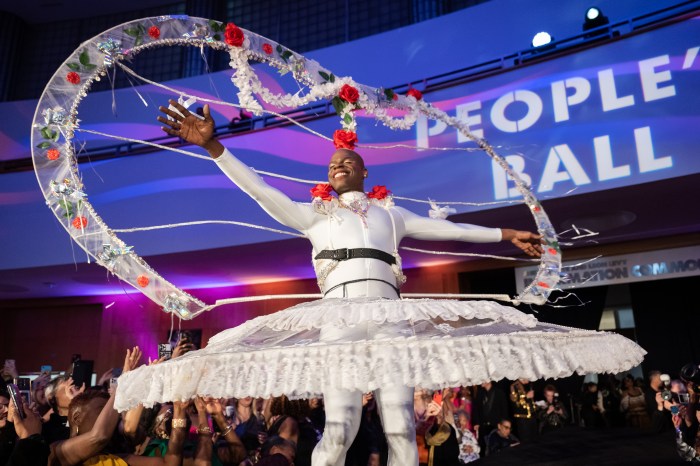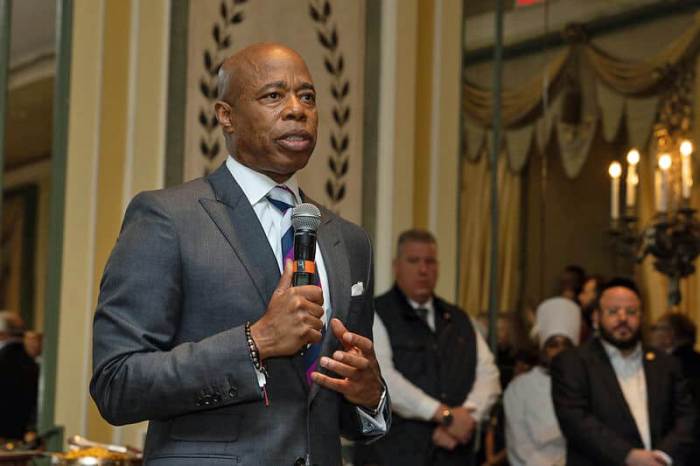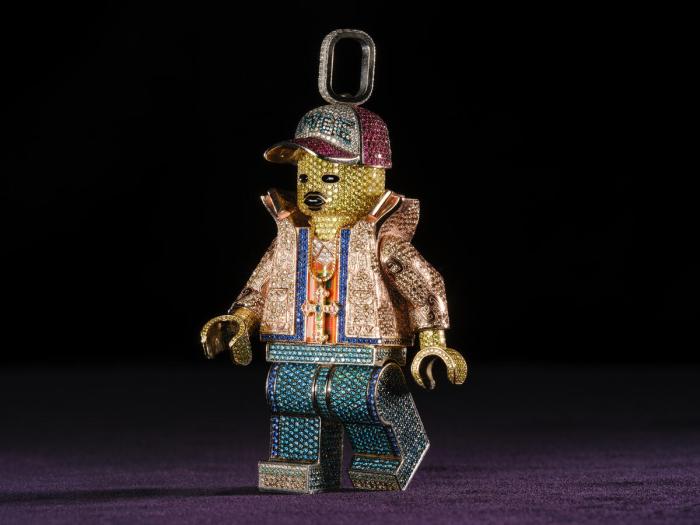DETROIT — Former Dumbo arts space Galapagos is barging into the Detroit area like it owns the place and could foster the same kind of gentrification it fled in Brooklyn, according to Motor City artists who are leery of the recent transplant.
Galapagos decamped in December, citing rent increases from landlord Two Trees, which had offered it discounted rates since it moved from Williamsburg in 2008. Now it is planning a veritable arts archipelago, most of it in a small city surrounded by Detroit called Highland Park. The team has bought up nine buildings, including eight adjacent ones in Highland Park, several of which formerly comprised a community college, and one in Detroit proper, all for less than $1 million, according to director Robert Elmes. There the new arrivals plan to build galleries, performance spaces, studios, and eventually loft apartments, plus a supersized version of the venue’s signature indoor lake. But locals are highly skeptical, in part because of Elmes’s lofty, New York-centric rhetoric about making Motown a national arts destination, which they say is tone-deaf and overlooks the people already living there.
The founder of an artist group with members in Detroit and New York called Playground Detroit is one such suspicious Michigander.
“There needs to be a deeper look at what his motives are and what he hopes to do here,” said Paulina Petkoski, a Detroit native who spent eight years in Brooklyn pursuing a career in fashion and returned home last July. “I hope that it’s a positive thing for the city of Detroit and for Highland Park.”
Galapagos’s arrival made a splash in Detroit, and Elmes’s statements raised the hackles of creative types who have long toiled in the cash-strapped city, where the murder rate is competitive and officials floated the idea of privatizing water and selling off the art museum’s internationally renowned collection to bring it out of bankruptcy.
“Cultural scenes need three things: time, space, and people,” Elmes told The Brooklyn Courier in December, his opinion of the cultural aptitude of Detroit’s 713,000 residents apparently not registering very high. “In Detroit there’s time and space. And the people are coming.”
Galapagos’s arrival sent one Detroit designer into a rage, prompting him to bang out an angry blog post blasting Elmes’s depiction of Detroit, saying the move drew attention away from a struggling Highland Park arts center, and griping that Elmes should hire designers from Detroit, not New York.
“F— you. Seriously, go f— yourselves,” Dylan Box wrote. “If you can give me a good reason to believe that you remember what it’s like to be an artist and not just a wealthy venue owner, I’ll apologize, but until then, you can piss off.”
Box did end up apologizing after Elmes read the rant and the two had a two-hour sitdown. The conversation prompted the blogger to declare Elmes truly supportive of artists and deem his depiction of the newcomer as a “dangerous or speculative real estate developer” to be “pretty off base and unfair.”
One Detroit gallery director who lived in New York in the 1990s said the ire directed at Galapagos is understandable, but it is nothing personal.
“I don’t really think the reaction positive or negative really relates so much to Galapagos as to an idea that by moving from Brooklyn to Detroit Galapagos somehow puts its stamp on a Detroit art community that has been a thriving, vital, energetic community for decades,” said Michelle Perron, director of Center Galleries, Kresge Arts at Detroit’s College for Creative Studies. “I think people are feeling turned off by the notion that without Galapagos we wouldn’t be very interesting.”
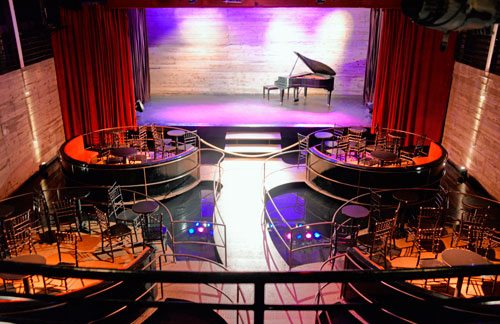
Elmes, for his part, thinks he has experience living with gentrification that Detroiters can learn from, and that the city and Highland Park are like Williamsburg was 20 years ago when he started Galapagos there.
“I’ll take all my experience from New York City and apply it here,” Elmes said during an hour-long drive around his new Highland Park ’hood. “I think if you rewound New York City to 1990, you’d find Detroit.”
The trick for artists, he said, is to invest in real estate early so that they don’t get priced out when outsiders get wise to the cool environment they have created. Galapagos fled rising rents in Williamsburg in 2007, before leaving Brooklyn entirely.
Box said Detroiters should take heed.
“He’s got a unique perspective on the matter that a lot of Detroit artists — myself included — have missed because we haven’t lived through gentrification of a neighborhood from start to finish,” he said.
Elmes and Galapagos are hardly the first Brooklyn transplants to take up residence in Detroit.
There’s such a constant flow of travelers between the two cities that four years ago Petkoski started a Facebook page to arrange ride-shares between them. The page now has 306 members posting a steady stream of requests for transportation and companionship.
The first phase of Elmes’s plan is set to be done by late summer 2016, in time for the first big art show of what he wants to be a biennial. He is also looking for investors to build the final, residential portion of the complex.
Despite her skepticism, Petkoski said she could be won over.
“Robert is a person with a lot of experience in making a large hub for artists and creatives that Detroit could benefit from,” she said. “It just depends on how it’s executed.”
